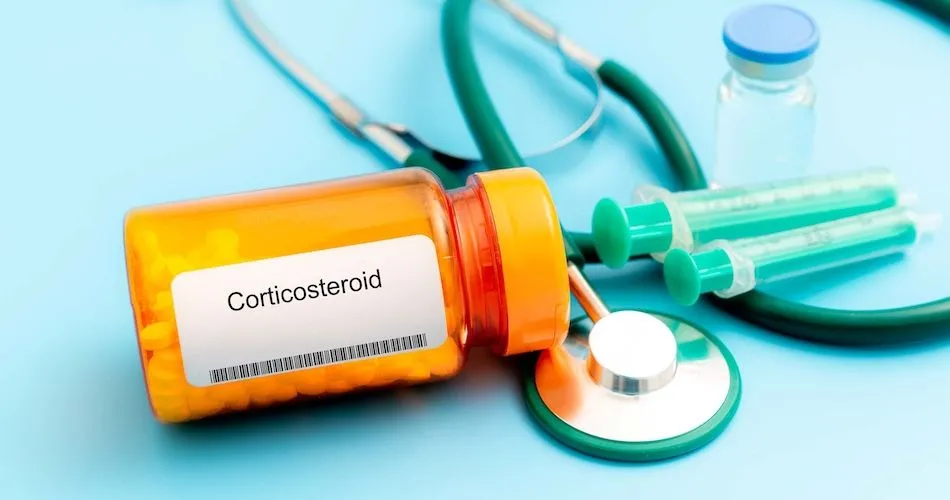Extramedullary Hematopoiesis in People with Myelofibrosis

You have myelofibrosis. Do you also have to worry about extramedullary hematopoiesis?
What Is Extramedullary Hematopoiesis and Why Does It Occur?
Extramedullary hematopoiesis (EMH) is a complication of myelofibrosis. Extramedullary means occurring outside of the bone marrow. Hematopoiesis means blood-cell formation. The bone marrow is supposed to be the only site of blood-cell production.
EMH occurs when organs (such as the spleen, liver, lungs, and digestive tract) try to compensate for the bone marrow's underproduction of red blood cells in myelofibrosis, trying to rebalance bodily systems.
When the bone marrow is no longer functional, reactively, the organs (most commonly the spleen and the liver) undertake the work themselves, and they become enlarged as a result. This enlargement is called splenomegaly (enlarged spleen) and hepatomegaly (enlarged liver).
Extramedullary Hematopoiesis Is Common in Myelofibrosis Patients
You have already heard EMH described in definitions of myelofibrosis, as it is common− it just may not have been named. Approximately 90% of people living with myelofibrosis (MF) have an enlarged spleen due to EMH when they’re diagnosed; about 39% to 65% may have an enlarged liver.
EMH also occurs in other conditions involving ineffective blood-cell production, such as thalassemia, sickle cell disease, and folate or vitamin B12 deficiency. (Thalassemia is a blood disorder passed down through families where the body makes mutated [disordered] hemoglobin or insufficient hemoglobin. Hemoglobin is the protein in red blood cells that carries oxygen.)
EMH also has been reported in solid tumors like breast cancer and lung cancer.
How Will Extramedullary Hematopoiesis Affect Me?
An enlarged spleen can cause pain or discomfort in your abdomen or below your left ribs. You also may feel full even when you have barely eaten.
An enlarged liver can lead to abnormal levels of liver enzymes, which can lead to abdominal pain, fatigue, nausea, and vomiting or result in yellowing of the skin and whites of the eyes (jaundice). The enlargement of the liver can also impair blood clotting.
Treatments for enlarged spleen include:
- JAK inhibitors (ruxolitinib [Jakafi®; also the newer fedratinib [Inrebic®], pacritinib [Vonjo®], and momelotinib [Ojjaara®])
- Immunomodulators (thalidomide and lenalidomide; spleen responses are modest)
- Chemotherapy drugs (hydroxyurea, interferon, cladribine)
- Splenectomy (removal of the spleen)
- Radiation therapy
Treatments for an enlarged liver include:
- Ruxolitinib
EMH can result in complications other than splenomegaly and hepatomegaly, depending on the specific organ involved, with potentially life-threatening consequences.
EMH affecting the central nervous system may lead to chronic headaches, delirium, sensitivity to light, papilledema (swelling of optic discs in your eyes due to increased intracranial pressure), and gait instability. Rarely, EMH develops near the spine and causes spinal cord compression.
EMH affecting lymph nodes can lead to generalized lymphadenopathy, which is swelling of lymph nodes that can indicate bacterial, viral, or fungal infections, autoimmune disease, or malignancy.
Finally, if the lungs are impacted by EMH, pleural effusions (a buildup of fluid around the lungs; the pleura is a thin layer of tissue covering the lungs and lining the interior wall of the chest cavity to protect and cushion the lungs) may result.
Take Care of Yourself to Avoid Complications
It’s important to take good care of yourself. Diabetes, hypertension, atherosclerotic or pulmonary disease, or obesity could worsen the complications of EMH. Proper nutrition and movement can help when if you are facing one or more of these comorbidities.
If you want to stay informed on important education and information about myelofibrosis, sign up for our bi-weekly newsletter here!
Sources:
- Primary myelofibrosis
- Clinicopathological characteristics and management of extramedullary hematopoiesis: A review
- Extramedullary Hematopoiesis (EMH) and Myelodysplastic Syndrome (MDS): Review
- Myelofibrosis (MF) Complications
- Myelofibrosis (Cleveland Clinic)
- A provider's guide to primary myelofibrosis: pathophysiology, diagnosis, and management
- Modern management of splenomegaly in patients with myelofibrosis
- Myelofibrosis-associated complications: pathogenesis, clinical manifestations, and effects on outcomes
You have myelofibrosis. Do you also have to worry about extramedullary hematopoiesis?
What Is Extramedullary Hematopoiesis and Why Does It Occur?
Extramedullary hematopoiesis (EMH) is a complication of myelofibrosis. Extramedullary means occurring outside of the bone marrow. Hematopoiesis means blood-cell formation. The bone marrow is supposed to be the only site of blood-cell production.
EMH occurs when organs (such as the spleen, liver, lungs, and digestive tract) try to compensate for the bone marrow's underproduction of red blood cells in myelofibrosis, trying to rebalance bodily systems.
When the bone marrow is no longer functional, reactively, the organs (most commonly the spleen and the liver) undertake the work themselves, and they become enlarged as a result. This enlargement is called splenomegaly (enlarged spleen) and hepatomegaly (enlarged liver).
Extramedullary Hematopoiesis Is Common in Myelofibrosis Patients
You have already heard EMH described in definitions of myelofibrosis, as it is common− it just may not have been named. Approximately 90% of people living with myelofibrosis (MF) have an enlarged spleen due to EMH when they’re diagnosed; about 39% to 65% may have an enlarged liver.
EMH also occurs in other conditions involving ineffective blood-cell production, such as thalassemia, sickle cell disease, and folate or vitamin B12 deficiency. (Thalassemia is a blood disorder passed down through families where the body makes mutated [disordered] hemoglobin or insufficient hemoglobin. Hemoglobin is the protein in red blood cells that carries oxygen.)
EMH also has been reported in solid tumors like breast cancer and lung cancer.
How Will Extramedullary Hematopoiesis Affect Me?
An enlarged spleen can cause pain or discomfort in your abdomen or below your left ribs. You also may feel full even when you have barely eaten.
An enlarged liver can lead to abnormal levels of liver enzymes, which can lead to abdominal pain, fatigue, nausea, and vomiting or result in yellowing of the skin and whites of the eyes (jaundice). The enlargement of the liver can also impair blood clotting.
Treatments for enlarged spleen include:
- JAK inhibitors (ruxolitinib [Jakafi®; also the newer fedratinib [Inrebic®], pacritinib [Vonjo®], and momelotinib [Ojjaara®])
- Immunomodulators (thalidomide and lenalidomide; spleen responses are modest)
- Chemotherapy drugs (hydroxyurea, interferon, cladribine)
- Splenectomy (removal of the spleen)
- Radiation therapy
Treatments for an enlarged liver include:
- Ruxolitinib
EMH can result in complications other than splenomegaly and hepatomegaly, depending on the specific organ involved, with potentially life-threatening consequences.
EMH affecting the central nervous system may lead to chronic headaches, delirium, sensitivity to light, papilledema (swelling of optic discs in your eyes due to increased intracranial pressure), and gait instability. Rarely, EMH develops near the spine and causes spinal cord compression.
EMH affecting lymph nodes can lead to generalized lymphadenopathy, which is swelling of lymph nodes that can indicate bacterial, viral, or fungal infections, autoimmune disease, or malignancy.
Finally, if the lungs are impacted by EMH, pleural effusions (a buildup of fluid around the lungs; the pleura is a thin layer of tissue covering the lungs and lining the interior wall of the chest cavity to protect and cushion the lungs) may result.
Take Care of Yourself to Avoid Complications
It’s important to take good care of yourself. Diabetes, hypertension, atherosclerotic or pulmonary disease, or obesity could worsen the complications of EMH. Proper nutrition and movement can help when if you are facing one or more of these comorbidities.
If you want to stay informed on important education and information about myelofibrosis, sign up for our bi-weekly newsletter here!
Sources:
- Primary myelofibrosis
- Clinicopathological characteristics and management of extramedullary hematopoiesis: A review
- Extramedullary Hematopoiesis (EMH) and Myelodysplastic Syndrome (MDS): Review
- Myelofibrosis (MF) Complications
- Myelofibrosis (Cleveland Clinic)
- A provider's guide to primary myelofibrosis: pathophysiology, diagnosis, and management
- Modern management of splenomegaly in patients with myelofibrosis
- Myelofibrosis-associated complications: pathogenesis, clinical manifestations, and effects on outcomes
about the author
Jacqueline M. Mahon, MA
Jacqueline is delighted to be writing for HealthTree Foundation. She has extensive experience working in blood cancers as well as other oncologic and therapeutic areas. When not writing, she may be gardening, hiking, or playing with her rescue cat, Merlin.
More on Core Education
Trending Articles
Get the Latest Myelofibrosis Updates, Delivered to You.
By subscribing to the HealthTree newsletter, you'll receive the latest research, treatment updates, and expert insights to help you navigate your health.
Together we care.
Together we cure.
3x Faster.









